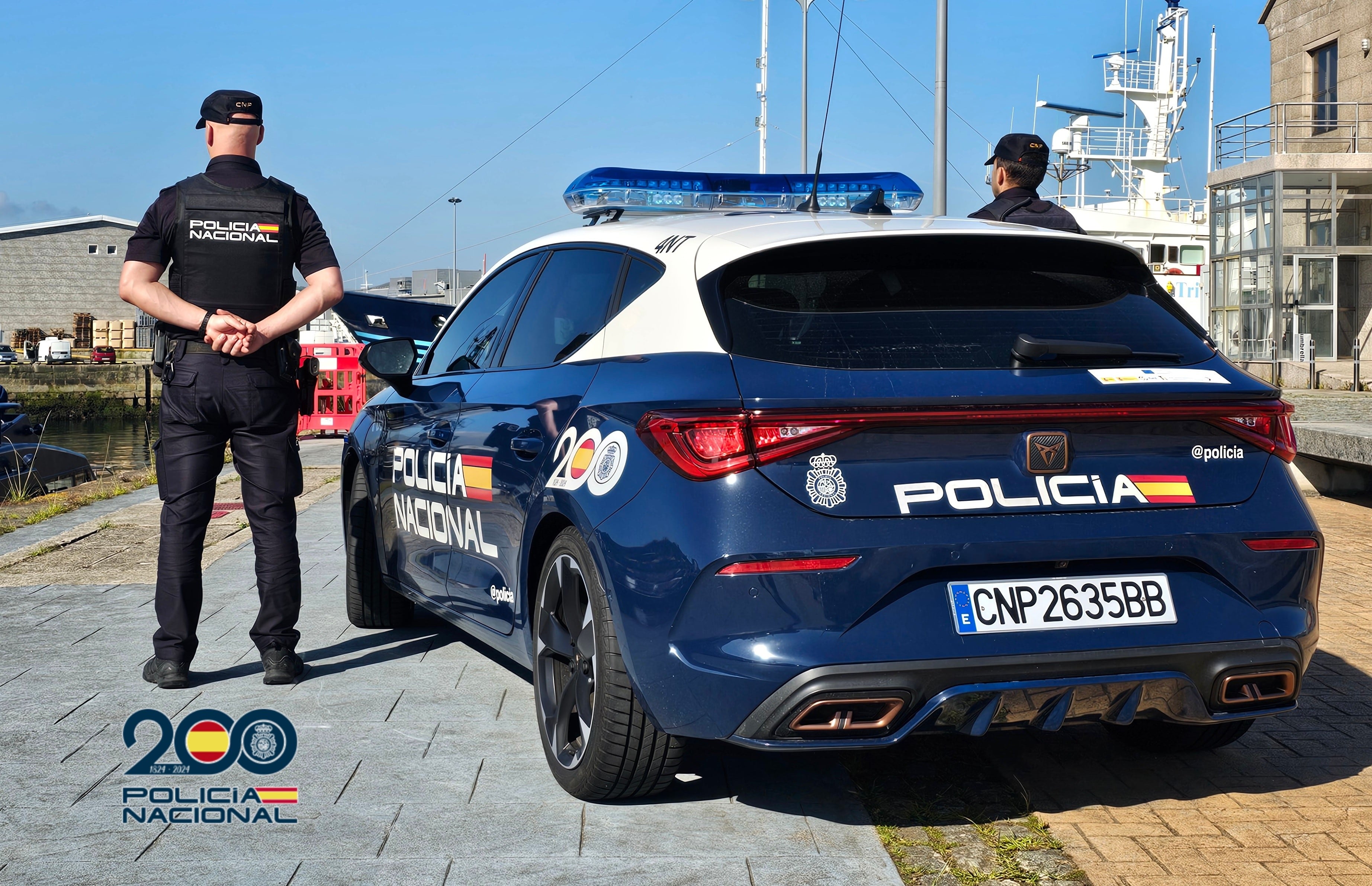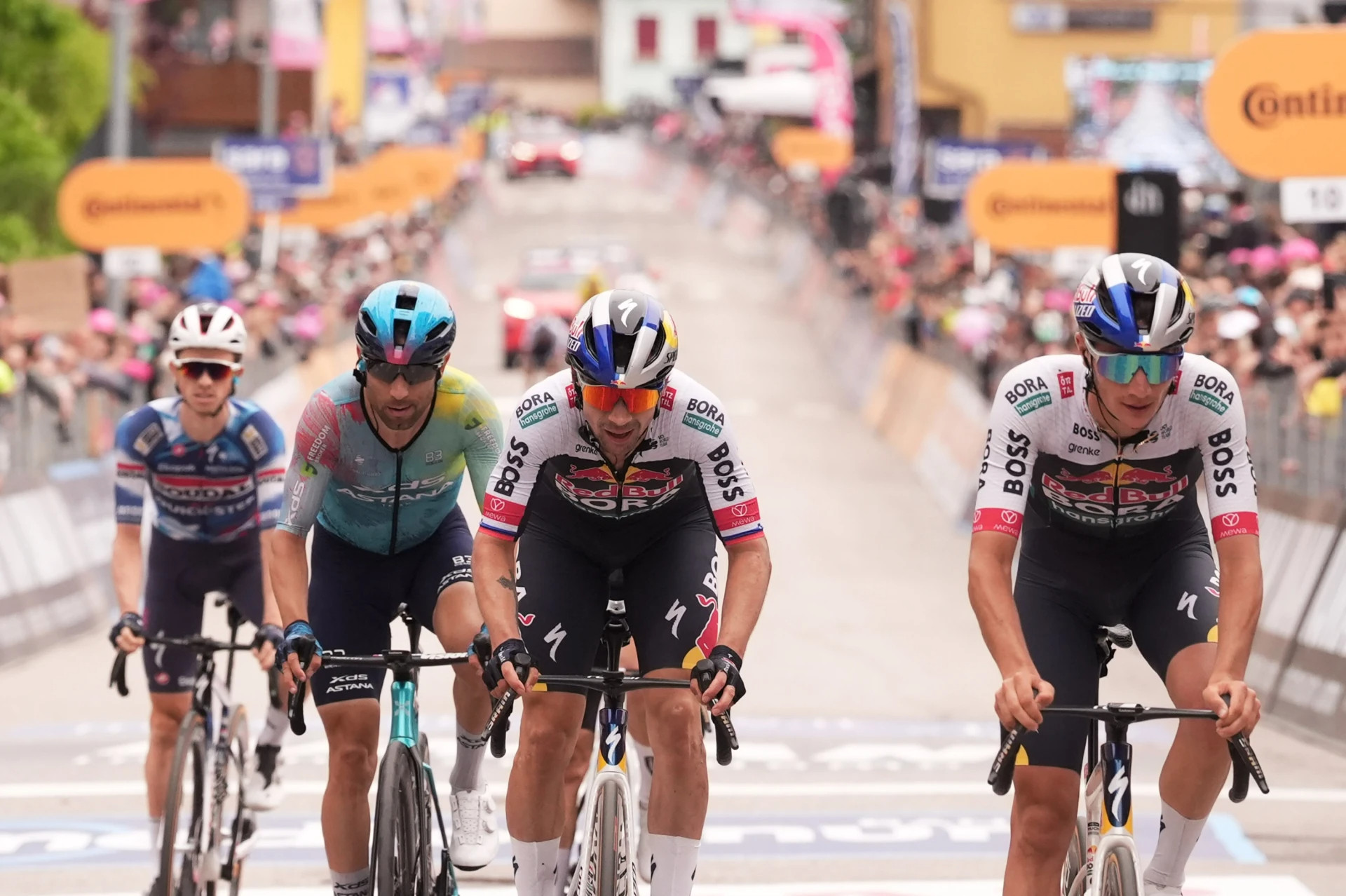A difference of 5 millimeters has been keeping Formula 1 for weeks
/s3/static.nrc.nl/images/gn4/stripped/data133019292-8fde9a.jpg|https://images.nrc.nl/_V11ZT6lBXJd1-GUE7HKgFWv3XQ=/1920x/filters:no_upscale()/s3/static.nrc.nl/images/gn4/stripped/data133019292-8fde9a.jpg|https://images.nrc.nl/vhneOyoQxXGuw-R4ZiPzXreeksE=/5760x/filters:no_upscale()/s3/static.nrc.nl/images/gn4/stripped/data133019292-8fde9a.jpg)
The protagonists of the Formula 1 weekend are shining in the pit lane in the Spanish sun. They have the wingspan of a sea eagle. They are light, paper thin and yet extremely strong. And they cost more than a ton each.
They are the front wings of the F1 cars. On Thursday morning they are not yet attached to the cars, which are tinkered by engineers. Chatter of screw machines and thumping music sound from the garages.
Later, once the wings are mounted on the circuit, where the flowing wind forces of hundreds of kilos release them on them, it will happen: they will bend on. Or rather – they bend slightly less than in the previous races.
With effect from this weekend’s Grand Prix in Barcelona this weekend, a tightening of the technical rules is in force, which stipulates that the front wings may be less flexible than before. These are millimeters, but all conversations in the F1 Paddock are about the curtailment of the Flexi-Wings. Not for nothing: according to Ferrari team boss Fred Vasseur there is possibly From a « Gamechanger »; His Williams colleague James Vowles predict A « in -depth effect. »
This rule, it sounds for weeks, can turn the ranking in Formula 1 upside down – perhaps even put an end to the leading position of McLaren. But what does all that bending actually for? And will the effect really be that great?
Loggry animals
The whole story starts with one finding: the current generation of Formula 1 cars does not like slow turns. In Chicanes, hairpin bends and other slow parts of the circuits, they feel for the drivers such as logge baking animals-whatever they are for F1 concepts-who reluctantly respond to steering movements. A powerful front wing helps against this, because it generates more downward pressure and thus pushes the front tires on the asphalt. That means more grip – and that again means that the car is sharper and direct in the slow turns.
Problem solved? No. Because now the car is more difficult to control in the Snélle turns. Due to the powerful front wing, the car has a relatively more grip on the front than on the back, which thereby gets the annoying tendency to slide. The car becomes twitchyas it is called in Jargon, referring to such a sudden muscle trek in your eyelid. Just as quickly and unexpectedly, with a car with a powerful front wing in a fast bend, the rear wheels can slip away. In the best case, the driver can correct that and only loses some time – in the worst case he ends in the wall.
Against that central dilemma of the modern F1 car, the flexible front wings help. More about how they do that exactly.
Minimum air resistance
The basic concept behind the bending wings is not new. Immediately when the first wings appeared on F1 cars in 1968, it was clear that they are useful in the turns, but not on the straight pieces. There, the protrusions only catch wind, which costs top speed, while you have nothing to drive straight out of the downward pressure (downforce) that they generate.
That is why the always innovative Lotus team connected a cable to the wing that same year, with which the driver could lay it flat on the straight pieces for minimal air resistance. In the turns the wing rose again, so that it stood diagonally in the wind and delivered the required downforce.
A simple and effective idea that was banned not long after. And that until today has remained: wings have to be According to the technical regulations « Sit firmly » and « immobile. »
That is the situation on paper – the practice is slightly different. The wings, which protrude almost a meter on either side of the nose and are pushed down by enormous force by the air stream, a bit bend. There is no material that is completely resistant to that. That is why Autosportbond FIA, the author of the technical rules, allows a minimal bending margin. It is difficult to check while the cars are driving around, so the FIA places weights of approximately 100 kilos on the two ends of the front wing during checks, which were allowed to bend up to 15 millimeters until recently.
So a gray area has been created that the F1 teams have been eagerly operating for a long time. They make wings that pass the weight test without any problems, but once on the circuit, where the forces are much larger, bend as far as possible. They do this because of the thin layers of carbon fiber that make up the wings, to glue over each other in particularly complicated manners – a process that brilliant professionals, scientists and a lot of computer power are involved.
With some regularity there is a hassle around the Flexi-Wings, usually because one team believes that the wings of the other team bend too far (and therefore give too much benefit). In 2021 the subject was under discussion, just like last year, when a mini -slot appeared in the rear wing of the McLaren at high speed, which resulted in extra top speed a few kilometers per hour. The FIA did not hand out penalties – in fact no rules were violated – but usually steered with a slight hand.
Dilemma
The fact that something is going on with the wings is because they do more than just raising the top speed in the current cars. They remedy the tricky dilemma of the modern F1 cars: that the large, strong front wings, necessary to get through the slow turns well, make the cars in the fast turns treacherously nervous.
At low speed, in a slow turn, the flexi-wing works as usual: it arouses a lot of downforce and delivers as much grip on the front wheels as possible. But after that, if the driver gives gas, the matter changes.
The faster the car drives, the more the wing bends and the flatter it will be. So that the front wing is less powerful when the driver comes hit at a fast turn. Now it is not the most grip, but the Áchterkant of the car. And that feels a lot more predictable and more pleasant for the driver – so that he also dares to drive into the corner at more speed.
It’s going in the wrong direction
Last summer, the FIA noticed that some teams were very emphatically looked up the edges of the gray area. Hence the tightening of the rules that will take effect this weekend. With the weight test, the front wing may only bend 10 millimeters on both sides. Although the FIA already announced the change in January, the union decided to take the new rules only now. The consideration That the newly manufactured front wings for the 2025 cars could otherwise go unused with the garbage truck. A shame, since one front wing is soon worth 125,000 euros.
Little difference
In Barcelona, the engineers will put the finishing touches on the cars on Thursday. These are largely transported to the races in separate parts and must always be completely built up. There are hefty laser scanners on stands for the pit boxes. The devices must make meticulous 3D models of the cars intended for the FIA, which can accurately check to the millimeter whether the cars meet all regulations.
What will happen if the cars are ready and go up the circuit? Will McLaren, which, according to Red Bull and Ferrari, enjoyed the most advantage of his wing, will no longer have the best car – with all the positive consequences that that entails for Max Verstappen’s hunt for a fifth world title?
The drivers themselves are unanimous in their judgment on Thursday: it will make little difference to the ranking.
« No, not at all, » says Lando Norris (McLaren) when he is asked if he is worried. Max Verstappen expects « no huge time gain or loss ». Ferrari driver Charles Leclerc agrees with him.
On the face of the Stoic Championship leader Oscar Piastri A grin appears when someone in the team supernaturs behind the pits asks him what the biggest problem is that the new rules will provide him. « How they are, probably, » replies the Australian. Most teams in Barcelona introduce their new front wing, but not McLaren adapted to the stricter requirements. Piastri says that his teammate Norris has previously driven the stiffer wing. « We know for sure that (the flexible front wing) is not our panacea. »
Nevertheless, something changes for the driving experience, the drivers agree. It becomes more difficult to adjust the car – more difficult to ensure that it feels good both in the slow and fast turns.
‘Not easily surprised’
Lewis Hamilton is anything but happy with it. The seven-time world champion, still not used to the Ferrari that he has been driving since this year, finds the flexible wings a « patch » on the technical rules introduced in 2022 that are to blame for all the unwanted driving characteristics of the current cars. « The Flexi-Wings were a positive factor, » he says in the Ferrari Honk, dressed in a shirt with sponsors and an army pants in desert camouflage print. « They made this generation of cars much more pleasant to drive in. So it is going in the wrong direction, that’s one thing that is certain. »
/s3/static.nrc.nl/images/gn4/stripped/data133019274-49ae7e.jpg|https://images.nrc.nl/c3WifZrUtGPYPd0bNqirbylKuFM=/1920x/filters:no_upscale()/s3/static.nrc.nl/images/gn4/stripped/data133019274-49ae7e.jpg|https://images.nrc.nl/7ONiSGvbWchxFmei5fTIFqjOS64=/5760x/filters:no_upscale()/s3/static.nrc.nl/images/gn4/stripped/data133019274-49ae7e.jpg)
But the changes behind the wheel should not be exaggerated, says Williams driver Carlos Sainz, the Spaniard who had to make way for Hamilton at Ferrari. « Nowadays we have so many ways, both aerodynamic and mechanical, to adjust the cars, » he says during a press conference. “We have three free training sessions to (the adjustment) fine tune And to get the car back at speed. And you can imagine that teams have also driven endless circles in the simulator with the new front wings. Nowadays F1 teams are so well prepared that they are not quickly surprised by such a change. ”
In short, do not expect that certain teams will suddenly be half a second per round due to the new wings. But on the other hand: a much smaller difference can also be meaningful in today’s Formula 1, in which there is sometimes hardly more than one second between the fastest and the slowest car in qualifying.
« I count on teams that do not lose more than one tenth of a second, depending on how flexible their wings were, » says Sainz during the press conference.
« A tenth of a second is four places on the starting setup, » the interviewer returns.
Sainz raises his eyebrows. « That is actually true. »
Read also
Formula 1 racing for beginners

:format(webp)/s3/static.nrc.nl/wp-content/uploads/2024/02/20120439/01_Pedaal-01-Pedalen.png)
:format(webp)/s3/static.nrc.nl/wp-content/uploads/2025/06/01034709/529085449.jpg)
/s3/static.nrc.nl/wp-content/uploads/2025/06/01094315/At-least-7-people-dead-after-bridge-collapses-on-passenger-train-in-Vygonichsky-district_68217991.jpg)
/s3/static.nrc.nl/wp-content/uploads/2025/05/30201011/web-3005BIN_Kunststof2.jpg)




